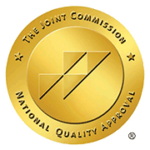The 411 on Stimulants for Mental Health: Uses, Benefits, and Side Effects

Stimulants have become a significant topic of discussion in mental health care. Part of the reason for this is that they’re often seen as a game-changer for managing conditions like attention-deficit hyperactivity disorder (ADHD) and other disorders.
However, stimulants also come with their share of questions and concerns. For instance, what exactly are stimulants? How do they work? What are their potential benefits, risks, and long-term effects?
At Mission Connection, we know how debilitating untreated ADHD can be, and also how medications can help. But we also understand the importance of knowing the effects of stimulants vs non-stimulants in ADHD treatment when choosing the right fit for your needs. This guide breaks down everything you need to know about stimulant medications, including:
- What stimulants are
- How stimulants work, including how quickly they take effect
- Conditions for which stimulants are used to treat
- Types of stimulant medications for ADHD
- Stimulant medication dosage guide
- Stimulant side effects and risks
- Long-term effects of stimulants
- How to stop stimulants safely
- Alternatives to stimulants for ADHD treatment

What Are Stimulants?
Prescription amphetamines like Adderall and Dexedrine- Methylphenidate, like Concerta and Ritalin
- Diet pills such as Didrex, Bontril, and Preludin
- Illicit drugs like methamphetamine, cocaine, methcathinone, and others
How Do Stimulants Work on the Brain?
Dopamine is the brain’s positive reinforcement chemical.4 When a substance or certain action releases dopamine, the brain and body want us to continue taking that substance or doing that action.- Norepinephrine helps make the brain and body more alert and ready in a process called the “fight-or-flight” response.5 This is why stimulant side effects can include symptoms like increased heart rate and breathing.
Conditions Stimulants Are Commonly Used to Treat
ADHD- Narcolepsy
- Obesity
- Depression
- Asthma
Can Stimulants Help Anxiety?
Still, stimulants can sometimes worsen anxiety in certain people due to their side effects. If you are coping with anxiety and are wondering if stimulants can help, ask your provider for guidance. The likelihood is that they will suggest trialing other anxiety-management methods first. These can include practices like grounding techniques or other medications for anxiety, like SSRIs.
How Fast Do Stimulants Work?
However, for the most part, prescription ADHD medications consist of short-acting stimulants, including amphetamines and immediate-release methylphenidate (MPH). These stimulant medications for ADHD have been used for several decades in their immediate-release form.
Both of these stimulants have rapid onsets, but leave the body quickly. For example, MPH peaks around two hours after initial dosing. For this reason, your provider may recommend taking the medication at least twice daily to help you find relief from ADHD symptoms throughout the day.9
Amphetamines also have a short onset, with people typically feeling effects in as little as 30 minutes.10 Yet, if you take an extended-release amphetamine, like adderall XR, you might begin to see improvements in your ADHD within a few weeks.11
Benefits of Stimulants for ADHD and Other Disorders
Even stimulants like caffeine are hailed for their ability to increase alertness with few downsides. For this reason, stimulants are most commonly prescribed for ADHD, where they have shown remarkable effectiveness in managing symptoms. To build awareness of the benefits of stimulants for ADHD and other disorders, the following information outlines how they can work to improve symptoms.-
Stimulants Help Boost Attention
For most people, paying attention and not having to feel constantly restless or distracted is a normal part of life. Unfortunately, this isn’t true for people with ADHD, who often struggle with issues like inattention, hyperactivity, and impulsivity.
Research shows that one of the most frequently reported benefits of stimulants is their ability to increase attentional performance.12 For this reason, stimulants can be life-changing in settings like work, school, or even at home.
-
Stimulants Can Enhance Cognition
Improved attention- Better vigilance
- The ability to think before responding
- Improved short and long-term memory
Because these benefits can be so pronounced, it’s important to never take more stimulant medication than prescribed because you feel it might further improve your cognitive functioning. Always follow your doctor’s instructions and only take the recommended dosage.
-
Stimulants Can Improve Emotions and Behaviors
If you’ve been diagnosed with ADHD, you might feel a lot of frustration or even anger because of your symptoms. This is normal. Studies show that many people with ADHD also have anger issues, along with repeating negative thoughts.13
Fortunately, research shows that stimulants might be able to help alleviate some of these emotional issues and change behavior by:14
Reducing emotional reactions to frustration- Improving the ability to detect errors
- Increasing effortful behavior
Types of Stimulant Medications for ADHD
There are two primary categories of stimulant medications used to treat ADHD: amphetamines and methylphenidates. These can come in different formats, including liquids, chewables, patches, sprinkles, and more.16 The following is a prescription stimulants list for both types of medications.
1. Amphetamines
Amphetamines include:17
Amphetamine and dextroamphetamine (Adderall)- Lisdexamfetamine (Vyvanse)
- Methamphetamine (Desoxyn)
2. Methylphenidates
Methylphenidates include:18
Ritalin and Methylin (immediate release)- Ritalin LA (extended release)
- Concerta (extended release)
- Relexxii (extended release)
Amphetamines Vs. Methylphenidates
When it comes down to amphetamines vs methylphenidates, the right choice for you will come down to your symptoms and sensitivity to medication. There are similarities between both meds, for instance, each type comes in various forms, such as immediate-release, sustained-release, and extended-release tablets or capsules. Additionally, it’s not very clear how each of these medications affects the brain aside from how both interact with dopamine and norepinephrine. However, there are some differences between amphetamines vs methylphenidates, including:19
Amphetamines have moderately greater effects than methylphenidate, so they may work better for more severe symptoms- Side effects such as weight loss and insomnia have been reported to be more common with amphetamines than with methylphenidates
Stimulant Medication Dosage Guide
Factors like age, weight, and the specific type of stimulant being used all influence the prescribed dose. But, a typical stimulant medication dosage guide can look like the following information:20
- For Amphetamine/Dextroamphetamine mixed salts, the initial dose is typically 2.5 mg per day, with a maximum dose of 40 mg per day.
- For Dexmethylphenidate extended release, treatment usually begins with 5 mg once a day, and the maximum dose is 30 mg once a day.
- For Methylphenidate, the initial dose is commonly 5 mg twice a day, taken before breakfast and lunch, with a maximum daily dose of 60 mg.
Stimulant Side Effects and Risks
Euphoria- Heightened feelings of well-being
- Increased heart rate
- Raised blood pressure
- Improved alertness
- Talkativeness
- Reduced appetite
These side effects are common and should balance out after a period of adjustment. However, severe stimulant side effects are also a risk, especially with higher doses, and might include issues such as:
Anxiety and tension- Hyperthermia, or significantly raised body temperature
- Nausea
- Tremor
- Seizures
Long-Term Effects of Stimulants
Cardiovascular conditions- Respiratory problems
- Strokes and blood supply issues to the brain
- Muscle and kidney dysfunction
- Gastrointestinal problems
Stopping Stimulants Safely
Stopping stimulant medications safely is crucial for preventing complications from arising, as they are associated with withdrawal symptoms. Stimulant withdrawal symptoms include issues such as:
- A sudden “crash” in energy
- Prolonged sleeping
- Depression
- Irritability
- Overeating
- Cravings
This come-down phase can last between one to two days, but is often followed by symptoms like:
- Mood swings
- Continued sleep disturbances
- Lethargy
Just as it takes time for your body to adapt to a certain substance, it also needs time to get used to the absence of it. This is why it’s never a good idea to stop taking a medication suddenly. If you want to come off stimulants, it’s best to do so gradually and under professional monitoring.
Using Stimulants Safely
Safe use of stimulants doesn’t have to be complicated. There are several key things to keep in mind when using these medications:
- Always follow your provider’s instructions and dosing recommendations
- Be aware of any potential interactions with other medications you are taking. Talk to your provider if you have concerns about mixing medications
- Avoid using alcohol or other substances while taking stimulants, as this can increase the risk of negative side effects
- If prescribed for ADHD, consider factoring behavioral therapy and lifestyle changes into your treatment plan. Stimulant medications are not a cure-all and should be used as part of a comprehensive treatment plan.
Alternatives to Stimulants for ADHD
Cognitive behavioral therapy (CBT): This type of therapy helps people with ADHD develop coping strategies and improve their executive functioning skills.- Neurofeedback: Also known as EEG biofeedback, this treatment uses brainwave monitoring to help people learn how to regulate their brain activity and improve focus.23
- Exercise: Regular physical activity can have a positive impact on ADHD symptoms by increasing dopamine levels in the brain and improving overall mood and well-being.
- Mindfulness meditation: This practice involves training the mind to focus on the present moment, which can help reduce distractibility and impulsivity associated with ADHD. It can also improve the symptoms of stress and anxiety.
Mission Connection: Expert Care for Your Mental Health
Navigating mental health treatment options can be complicated. This is why, at Mission Connection, we provide outpatient and telehealth mental health services designed to support your unique needs.
Whether you’re exploring stimulant options, alternative treatments, or therapy, our expert team can guide you every step of the way. With locations in California, Virginia, and Washington, as well as virtual options, expert care is never far away. Contact our team today to find out more about ADHD treatment that can make a real change in your life and well-being.

References
- Alcohol and Drug Foundation. (2025, March 7). Stimulants. Adf.org.au; Alcohol and Drug Foundation. https://adf.org.au/drug-facts/stimulants/
- DEA. (2020). WHAT ARE STIMULANTS? https://www.dea.gov/sites/default/files/2020-06/Stimulants-2020.pdf
- on, I. (2019, November). Mind Matters: The Body’s Response to Prescription Stimulants | National Institute on Drug Abuse. National Institute on Drug Abuse. https://nida.nih.gov/research-topics/parents-educators/mind-matter-series/prescription-stimulants
- Bromberg-Martin, E. S., Matsumoto, M., & Hikosaka, O. (2010). Dopamine in motivational control: Rewarding, aversive, and alerting. Neuron, 68(5), 815–834. https://doi.org/10.1016/j.neuron.2010.11.022
- Hussain, L. S., Maani, C. V., & Reddy, V. (2023, May 1). Physiology, noradrenergic synapse. PubMed; StatPearls Publishing. https://www.ncbi.nlm.nih.gov/books/NBK540977/
- Castells, X., Blanco-Silvente, L., & Cunill, R. (2018). Amphetamines for attention deficit hyperactivity disorder (ADHD) in adults. Cochrane Database of Systematic Reviews, 8(8). https://doi.org/10.1002/14651858.cd007813.pub3
- National Library of Medicine. (2021). Chapter 2—how stimulants affect the brain and behavior. In www.ncbi.nlm.nih.gov. Substance Abuse and Mental Health Services Administration (US). https://www.ncbi.nlm.nih.gov/books/NBK576548/ (Original work published 1999)
- CAMH. (2018). Amphetamines. CAMH. https://www.camh.ca/en/health-info/mental-illness-and-addiction-index/amphetamines
- Swanson, J. M. (2005). Long-acting stimulants: Development and dosing. The Canadian Child and Adolescent Psychiatry Review, 14(Suppl 1), 4. https://pmc.ncbi.nlm.nih.gov/articles/PMC2547091/
- Alcohol and Drug Foundation. (2016). ADF – Drug Facts – Amphetamines. ADF – Alcohol & Drug Foundation. https://adf.org.au/drug-facts/amphetamines/
- Amphetamine (Adderall) | NAMI. (n.d.). Www.nami.org. https://www.nami.org/about-mental-illness/treatments/mental-health-medications/types-of-medication/amphetamine-adderall/
- Dougherty, D. M., Olvera, R. L., Acheson, A., Hill-Kapturczak, N., Ryan, S. R., & Mathias, C. W. (2016). Acute effects of methylphenidate on impulsivity and attentional behavior among adolescents comorbid for ADHD and conduct disorder. Journal of Adolescence, 53, 222–230. https://doi.org/10.1016/j.adolescence.2016.10.013
- Isaksson, J., Sukhodolsky, D., Koposov, R., Stickley, A., Ramklint, M., & Ruchkin, V. (2024). Attention-deficit/hyperactivity disorder symptoms and anger and aggression in Russian adolescents. JAACAP Open. https://doi.org/10.1016/j.jaacop.2024.01.006
- Advokat, C., & Scheithauer, M. (2013). Attention-deficit hyperactivity disorder (ADHD) stimulant medications as cognitive enhancers. Frontiers in Neuroscience, 7, 82. https://doi.org/10.3389/fnins.2013.00082
- Coughlin, C. G., Cohen, S. C., Mulqueen, J. M., Ferracioli-Oda, E., Stuckelman, Z. D., & Bloch, M. H. (2015). Meta-analysis: Reduced risk of anxiety with psychostimulant treatment in children with attention-deficit/hyperactivity disorder. Journal of Child and Adolescent Psychopharmacology, 25(8), 611–617. https://doi.org/10.1089/cap.2015.0075
- Short-acting stimulant medications for treatment of ADHD: Methylphenidate-based medications, amphetamine-based medications. (n.d.). https://www.adhdmedicationguide.com/pdf/stim_med_guide_combo_092223.pdf
- Amphetamines: What are amphetamines? (2020). https://www.dea.gov/sites/default/files/2020-06/Amphetamines-2020_0.pdf
- Methylphenidate or dexmethylphenidate (Concerta, Ritalin and others) | NAMI. (n.d.). Www.nami.org. https://www.nami.org/about-mental-illness/treatments/mental-health-medications/types-of-medication/methylphenidate-or-dexmethylphenidate-concerta-ritalin-and-others/
- Faraone, S. V. (2018). The pharmacology of amphetamine and methylphenidate: Relevance to the neurobiology of attention-deficit/hyperactivity disorder and other psychiatric comorbidities. Neuroscience & Biobehavioral Reviews, 87, 255–270. https://doi.org/10.1016/j.neubiorev.2018.02.001
- Stimulant and related medications: U.S. Food and Drug Administration-approved indications and dosages for use in pediatric patients. (n.d.). https://www.cms.gov/Medicare-Medicaid-Coordination/Fraud-Prevention/Medicaid-Integrity-Education/Pharmacy-Education-Materials/Downloads/stim-pediatric-dosingchart11-14.pdf
- Fredriksen, M., Halmøy, A., Faraone, S. V., & Haavik, J. (2013). Long-term efficacy and safety of treatment with stimulants and atomoxetine in adult ADHD: A review of controlled and naturalistic studies. European Neuropsychopharmacology, 23(6), 508–527. https://doi.org/10.1016/j.euroneuro.2012.07.016
- Chapter 3—Medical aspects of stimulant use disorders. (1999). In www.ncbi.nlm.nih.gov. Substance Abuse and Mental Health Services Administration (US). https://www.ncbi.nlm.nih.gov/books/NBK576550/
- Enriquez-Geppert, S., Smit, D., Pimenta, M. G., & Arns, M. (2019). Neurofeedback as a treatment intervention in ADHD: Current evidence and practice. Current Psychiatry Reports, 21(6). https://doi.org/10.1007/s11920-019-1021-4





